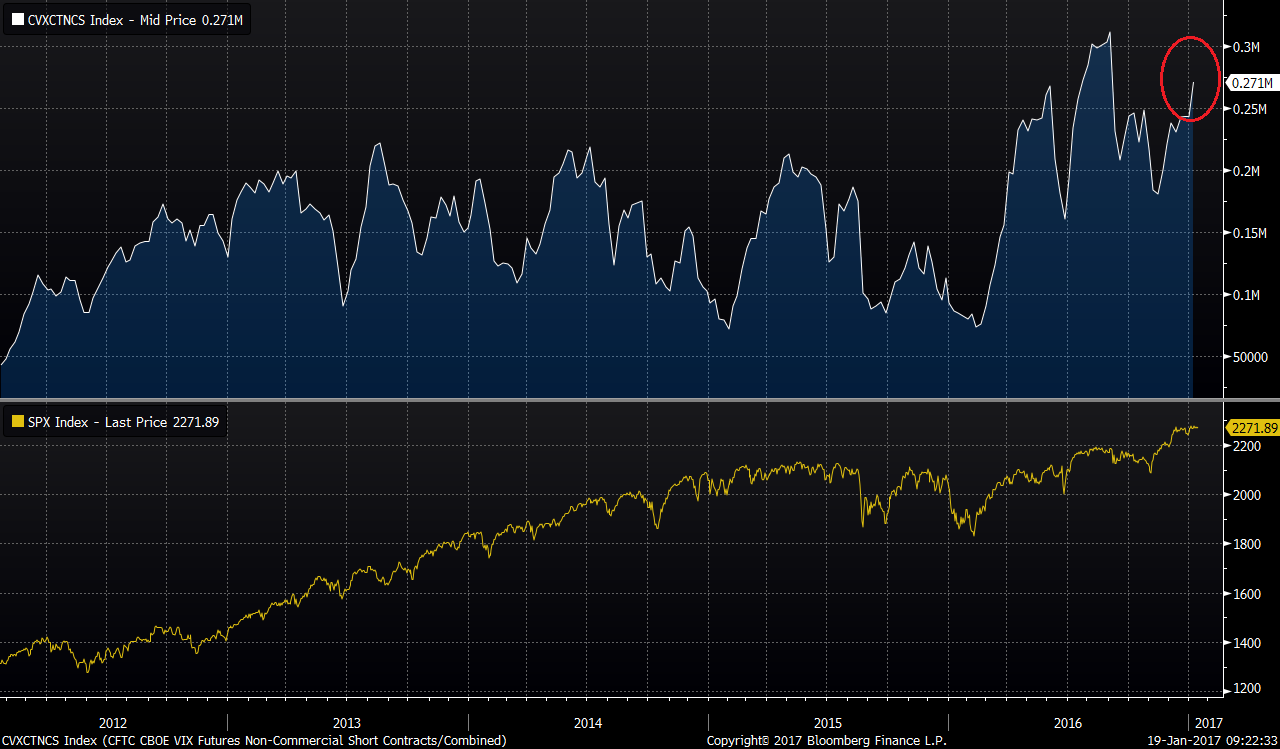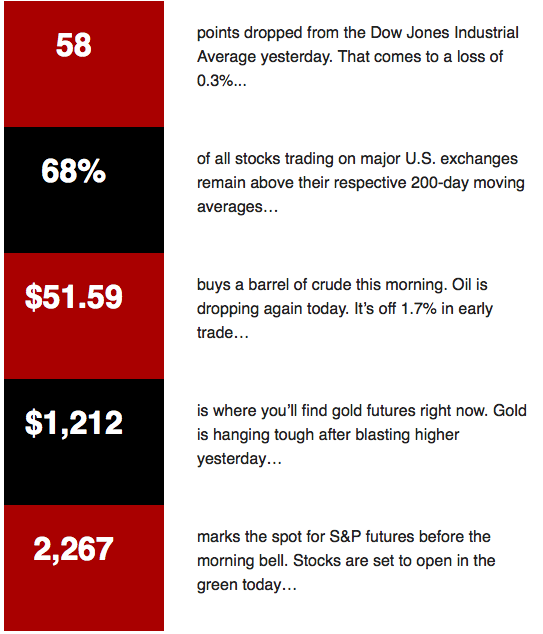Sent to subscribers on January 23, 2017, 6:54 AM.
Briefly: In our opinion, speculative short positions are favored (with stop-loss at 2,330, and profit target at 2,150, S&P 500 index).
Our intraday outlook remains bearish, and our short-term outlook is bearish. Our medium-term outlook remains neutral, following S&P 500 index breakout above last year’s all-time high:
Intraday outlook (next 24 hours): bearish
Short-term outlook (next 1-2 weeks): bearish
Medium-term outlook (next 1-3 months): neutral
Long-term outlook (next year): neutral
The main U.S. stock market indexes gained between 0.2% and 0.5% on Friday, extending their short-term consolidation, as investors reacted to economic data releases, Donald Trump’s Presidential Inauguration, among others. The S&P 500 index continues to trade close to its January 6 new record high of 2,282.10. Generally, all three major stock market indexes extend their fluctuations along new all-time highs. The Dow Jones Industrial Average trades relatively close to round resistance level of 20,000 and the technology Nasdaq Composite has reached its new record high a week ago at the level of 5,584.26. Will the market extend its year-long medium-term uptrend even further before some more meaningful downward correction? The next possible resistance level of the S&P 500 index remains at 2,300 mark. On the other hand, the nearest support level is at around 2,255-2,260, marked by recent local lows. The next support level is at 2,230-2,240, marked by the late December local low. We can see new long-term highs within almost eight-year-long bull market from 2009 multi-year low of 666.8. However, the index extends its over month-long consolidation. It still trades along medium-term upward trend line, as we can see on the daily chart:

Expectations before the opening of today’s trading session are slightly negative, with index futures currently down 0.1-0.2%, as investors take short-term profits off the table following Friday’s advance. The market has retraced its Friday’s move up. The main European stock market indexes have lost 0.3-0.4% so far. The S&P 500 futures contract trades within an intraday consolidation, following an overnight move down. The nearest important support level remains at 2,245-2,250, marked by previous local low. On the other hand, resistance level is at around 2,270-2,275, marked by local highs. Is this a topping pattern before downward correction of the November – December rally? Or just consolidation within an uptrend? There have been no confirmed negative signals so far. The futures contract continues to trade within an over week-long consolidation along 2,260-2,270, as the 15-minute chart shows:

The technology Nasdaq 100 futures contract follows a similar path, as it currently trades within an intraday consolidation, following an overnight move down. The market remains relatively close to its Friday’s new all-time high above the level of 5,080. However, it looks like an intraday flat correction within a short-term downtrend. The next potential resistance level is at 5,100 mark. On the other hand, support level remains at 5,040-5,050, marked by some recent local lows. The next support level is at 4,980-5,000, marked by previous level of resistance. Will the technology Nasdaq 100 futures contract continue its medium-term uptrend even further? There have been no confirmed negative signals so far. However, we still can see short-term overbought conditions:

Concluding, the broad stock market extends its short-term fluctuations along new record highs, as investors await quarterly corporate earnings releases. Will those reports drive the broad stock market higher before some more meaningful downward correction? There have been no confirmed negative signals so far. However, we still can see medium-term overbought conditions accompanied by negative technical divergences. Therefore, we continue to maintain our speculative short position (opened on December 14 at 2,268.35 – daily opening price of the S&P 500 index). Stop-loss level remains at 2,330 and potential profit target is at 2,150 (S&P 500 index). You can trade S&P 500 index using futures contracts (S&P 500 futures contract – SP, E-mini S&P 500 futures contract – ES) or an ETF like the SPDR S&P 500 ETF – SPY. It is always important to set some exit price level in case some events cause the price to move in the unlikely direction. Having safety measures in place helps limit potential losses while letting the gains grow.
To summarize: short position in S&P 500 index is justified from the risk/reward perspective with the following entry prices, stop-loss orders and profit target price levels:
S&P 500 index – short position: profit target level: 2,150; stop-loss level: 2,330
S&P 500 futures contract (March 2017) – short position: profit target level: 2,145; stop-loss level: 2,325
SPY ETF (SPDR S&P 500, not leveraged) – short position: profit target level: $214; stop-loss level: $232
SDS ETF (ProShares UltraShort S&P500, leveraged: -2x) – long position: profit target level: $16.35; stop-loss level: $14.00 (calculated using trade’s opening price on Dec 14 at $14.78).
Thank you.
….also from Sunshine Profits: Oil Trading Alert: Time for Drop below $50?
Paul Rejczak
Stock Trading Strategist
Stock Trading Alerts





 The field of routers and switches which has made Cisco famous is likely to change dramatically over the next few years.
The field of routers and switches which has made Cisco famous is likely to change dramatically over the next few years.

 There are many advantages to spread betting not least the flexibility to engage in transactions whilst on the move and in your spare time. In addition to this, as you don’t own the asset there is no need for large capital investment. The basic principle of this form of investment and trading is a simple one. However, albeit straightforward it would be prudent to enlist the support of a professional such as the CMC markets, an online trading and investment company.
There are many advantages to spread betting not least the flexibility to engage in transactions whilst on the move and in your spare time. In addition to this, as you don’t own the asset there is no need for large capital investment. The basic principle of this form of investment and trading is a simple one. However, albeit straightforward it would be prudent to enlist the support of a professional such as the CMC markets, an online trading and investment company.












